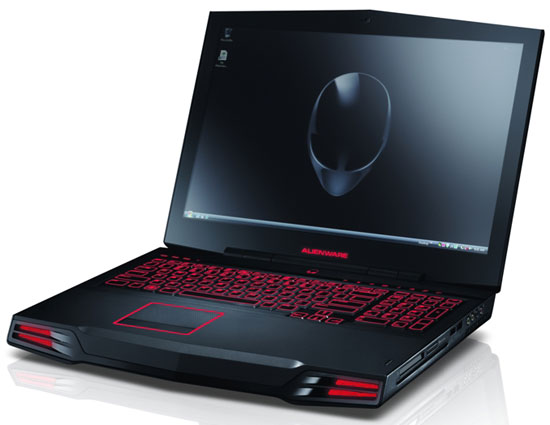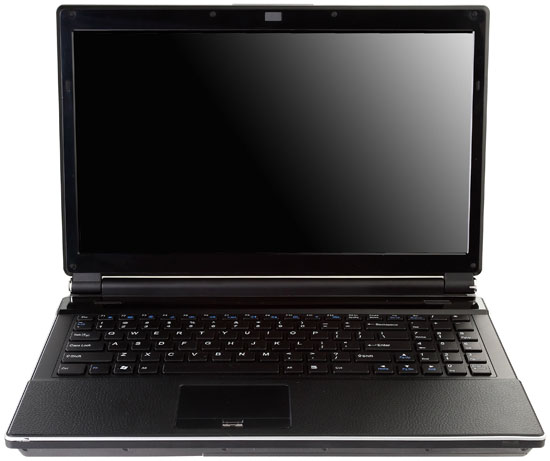Mobile Buyers' Guide, December 2009
by Jarred Walton on December 6, 2009 12:00 AM EST- Posted in
- Guides
High-End Laptops: $1500 and Up
At the top of the mobile price scale, we have laptops and notebooks that cost anywhere from $1500 to $5000 (or even more!), with components to match the prices. Most users spending this much money on a laptop are interested in one of three things: mobile gaming, mobile workstations, or "designer" laptops. We'll look at all three categories briefly.
The gaming and workstation crowds will want to start with reading our last High-end Laptop Roundup. That article will give you a good idea of what level of performance you can expect, and while all three notebooks in that article use Clevo chassis, switching to a different brand may improve aesthetics or features but likely won't change the performance picture.
High-End Gaming
If you want maximum gaming performance, for the time being you will be best served by a GTX 280M SLI configuration. There are two notebooks to choose from, both sporting similar features.
On the one hand, we have the Clevo M980NU (which we reviewed in the Eurocom M980NU Xcaliber). It supports Core 2 Duo/Quad/Extreme CPUs, and the minimum price for a 280M SLI setup is going to be around $2450; both AVADirect and Sager Notebooks have similar pricing, with a slight advantage to Sager (about $65 for a $2700 notebook). We chose a Core 2 Duo P9700, 2x2GB DDR3-1066, and a single 500GB 7200RPM HDD for our price comparison, with a price of $2779 from AVADirect and $2714 from Sager. If you prefer more detailed customization options, we'd recommend AVADirect over Sager simply by virtue of the number of options they give for each component.

The other option for a GTX 280M SLI notebook is the Alienware m17x. Some of you are probably thinking, "Oh, great… an expensive alternative from Alienware!" Well, you might be surprised by the pricing. We selected the same basic features as the M980NU but with a T9600 CPU (same clock speed as the P9700 but a higher TDP and $30 cheaper). We also upgraded from the default 1440x900 LCD to a 1920x1200 LCD. The final cost ended up at $2724, which is essentially a tie with the cheapest Clevo M980NU offerings. So the cost is the same, but let's discuss some differences.
For one, the m17x is a 17" chassis instead of an 18.4" chassis - though it's a large 17" chassis, so the difference isn't all that great. Some will like the 1920x1200 LCD instead of the 1920x1080 panel on the M980NU, though again they're pretty close. The biggest difference is in the aesthetics and a few extras on the Alienware. Aesthetics boil down to personal preference, but the m17x has zoned lighting that can be customized to your liking and we think it looks better. The bigger factor is that Alienware supports Hybrid GPUs, allowing you to switch off the GTX 280M SLI and run on the integrated 9400M. Battery life is still mediocre in comparison to other laptops, but we managed to get three hours from the m17x in a pinch. That particular setup used dual 7200 RPM HDDs and a Core 2 Extreme QX9300, running in Stealth mode (minimum CPU performance) with the 9400M. We also got two hours of Blu-ray playback using similar settings. That's not going to light the world on fire, but it's nice to be able to get more than an hour of battery life out of your $2500+ notebook.
Frankly, there's no reason that every gaming laptop shipped these days shouldn't support Hybrid GPUs with the ability to switch between discrete and integrated graphics. Typical gaming GPUs will consume at least 6 to 10W even at idle, which rapidly eats into battery life on a 6-cell or even 12-cell battery.

Other gaming options include laptops like the Clevo W860CU/W870CU (15.6" or 17" chassis, respectively). We looked at the Clevo W870CU and didn't care for the construction much, so we'd recommend going with the W860CU instead. You get the same basic features but with a smaller chassis, and you lose support for the second HDD.
What about ATI gaming laptops? First, the Alienware m17x also supports HD 4870X2 CrossFire, which is one option. Our testing of the ASUS W90Vp suggests that the GTX 280M SLI is faster, however, and NVIDIA's mobile driver program is definitely an advantage, so we can't see spending $100 extra to get 4870X2 over an SLI setup. A more interesting alternative is the HP Envy 15, which comes with the HD 4830. Performance of the GPU is going to be lower than the GTX 260M by virtue of the fact the 4830 uses a 128-bit interface, but the Envy 15 does look quite nice. A base configuration with i7-720QM will run $1800.










49 Comments
View All Comments
JarredWalton - Monday, December 7, 2009 - link
I've placed an order... I'll do a review if they work well.yacoub - Sunday, December 6, 2009 - link
http://i.i.com.com/cnwk.1d/i/bto/20091118/by-manf....">http://i.i.com.com/cnwk.1d/i/bto/20091118/by-manf....I can't find the initial article anymore but this just came out a couple weeks ago.
http://news.cnet.com/8301-17938_105-10400447-1.htm...">http://news.cnet.com/8301-17938_105-10400447-1.htm...
HP had the most quality issues, Asus the least.
Blahman - Sunday, December 6, 2009 - link
If you thought the UL80Vt was good, check out its newer slimmer brother: the UL30Vt. It shares all the same specs, but better build quality and all packed into a thinner, lighter chassis.It's available from Amazon for $800. The reviews so far are very positive.
http://www.amazon.com/UL30Vt-X1-13-3-Inch-Laptop-W...">http://www.amazon.com/UL30Vt-X1-13-3-In...ctronics...
trickdaddy111m - Tuesday, December 8, 2009 - link
The UL30Vt does look very nice, but it lacks discrete graphics and the Turbo function of the UL80Vt. So, "same specs" is not accurate.KikassAssassin - Wednesday, December 9, 2009 - link
The UL30Vt has turbo and the discrete graphics. The specs are exactly the same as the UL80Vt except it has a 1" smaller screen, no optical drive, and a slightly smaller battery.You're probably looking at the UL30A.
KikassAssassin - Sunday, December 6, 2009 - link
The UL30Vt looks like a really nice alternative if you want something lighter than the UL80Vt and you don't need an optical drive. Unfortunately, the UL30Vt on Amazon is the X1 model that only has a 4400 mAh battery, compared to the UL80Vt-A1's 5600 mAh battery, so it'll only have about 80% of the battery life. The battery life should still be excellent, just not quite as amazing as the UL80Vt'stechwriters4breakfast - Sunday, December 6, 2009 - link
atom 2arrandale
bsoft16384 - Sunday, December 6, 2009 - link
I just want to give another shout out for the Acer 1410. This is an absolutely fantastic notebook for $400.I have the single-core version (Core 2 Solo SU3500, 1.4GHz, 3M cache) so it's somewhat faster on single-threaded code but slower on multi-threaded code than the Celeron SU2300 (1.2GHz, 1M cache). That said, I have no performance complaints about the laptop.
GPU performance is, as you would expect, pretty bad. But it's still dramatically ahead of a GMA950-based netbook (around 5X by my estimations), which makes it fine for playing older titles like Warcraft III, CS 1.6, UT classic or 2004, Quake 3 / OpenArena, Half-Life.
Even WoW runs "OK" on the Acer 1410, as long as you're willing to deal with ~20-30 FPS and a slideshow in Dalaran. But you *can* run it, and it's fine for doing dailies or checking the AH. I have my desktop if I want to play for real.
The keyboard is excellent, except for the page up/down buttons (which are annoyingly above the arrow keys) and home/end (combined with page up / down). Other than those annoyances, the keyboard is full-sized and has the layout that you would expect.
The screen is decently bright; contrast is "OK" but not great, and the viewing angle is lame (but so are most laptops). It's easily better than my ThinkPad T61.
There are some surprises port-wise: the 1410 has HDMI (with 8-channel LPCM audio) and the audio-out port does SPDIF/TOSLINK (with a 3.5mm to TOSLINK adapter), neither of which are common on a $400 laptop.
The WiFi is Intel 5100 802.11n, which is also nice. Ethernet is Atheros, audio is Realtek.
As you would expect with an ULV notebook, the 1410 doesn't really ever get hot, even at 100% CPU / GPU. It's not particularly noisy either, unless you have a defective fan (as my first one from Amazon did).
The 1410 takes forever to charge from empty (2.5 hours if off, 3-4 if on). That's because it uses the same 30W power supply as the Aspire One. On the other hand, the power adapter is very small and decently cheap, both of which are pluses.
Battery life is 5-6 hours, depending on how hard you push the machine. At idle, at minimum brightness, Windows reports over 12 hours, but you can't achieve this in practice. With light web browsing and Flashblock, expect 6+ hours.
The touchpad is Synaptics, and does multi-touch.
This system is the smallest, lightest system that I would consider a 'notebook' rather than a 'netbook'. I considered the HP Mini 311, but it maxes out at 3GB and doesn't support x86-64 or virtualization, plus the Core 2 Solo beats the pants off of the Atom. NVIDIA ION isn't really a whole lot better than the GMA X4500MHD, because the Atom CPU prevents you from playing any modern games anyway and the GMA X4500 does fine for Windows Aero and HD video acceleration.
Two years ago the Aspire 1410 would have cost $2000 and would be called an 'ultralight'. Today it's $400.
Keeir - Wednesday, December 9, 2009 - link
Don't forget its slightly more expensive brotherTimeline 1810T-8
Core 2 Duo (SU7300), 4 Gigs of Ram, Bluetooth, Larger HD, same wieght and battery
Picked mine up for <600 from Amazon (though I see they have ballons to close to 700)
notanakin - Monday, December 7, 2009 - link
Unfortunately this guide came out just a few days too late, but fortunately I'd settled on the Acer 1410 (SU2300) and it's a nice little machine. Certainly fast enough for simple tasks and for my old eyes the screen size is better than the 10.1 inchers.Here's a very useful link to a table of laptops/CPUs/Screen size prepared for the recent PC Show in Singapore where I bought the laptop. Great for doing some quick comparisons.
(Prices are in Singapore $ - about US$1=S$1.4, so the prices are a bit more expensive than in the USA, but they give some discounts off the published price and throw in stuff - I got an external DVD-writer plus a few smaller things with the Acer.)
But how I HATE the glossy screen. Are they cheaper than matte screens or what? I'd gladly pay US$50 more for a matte screen.